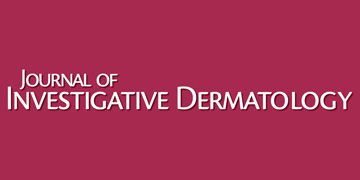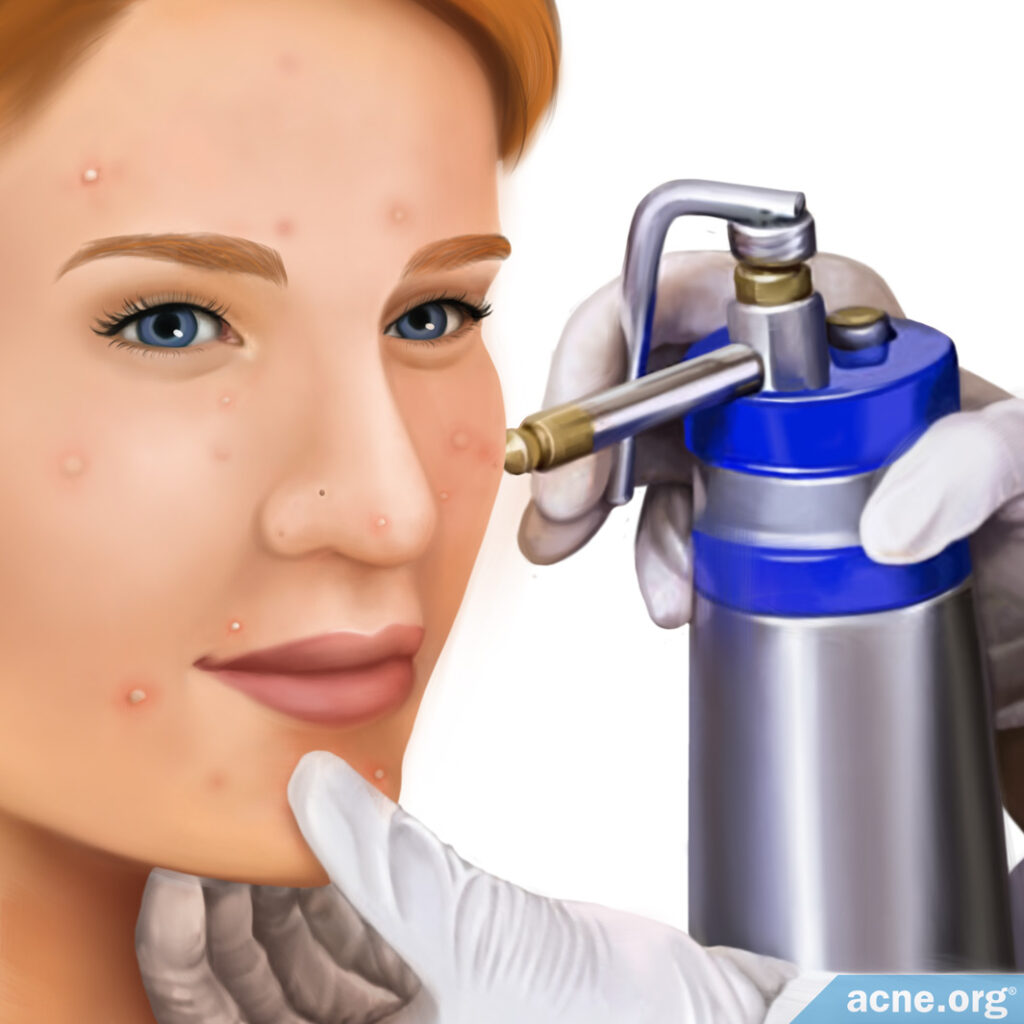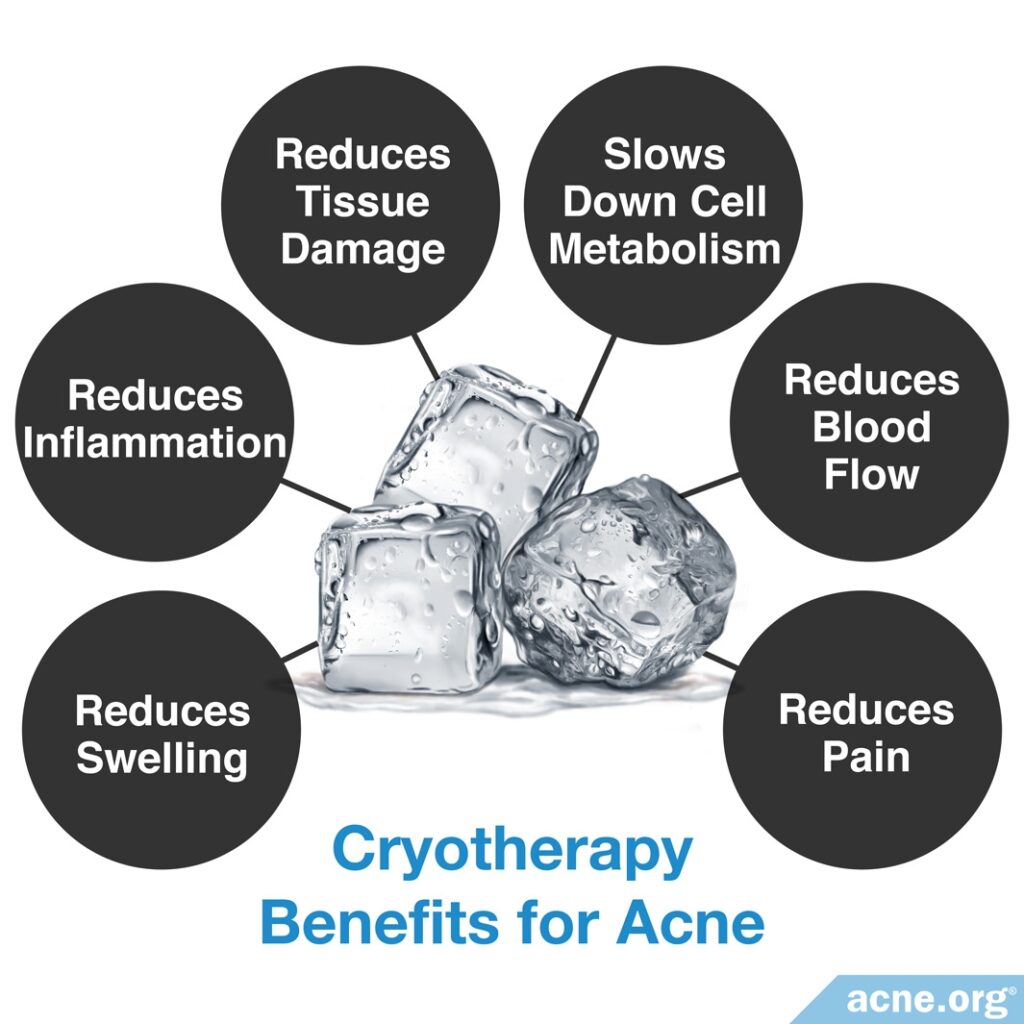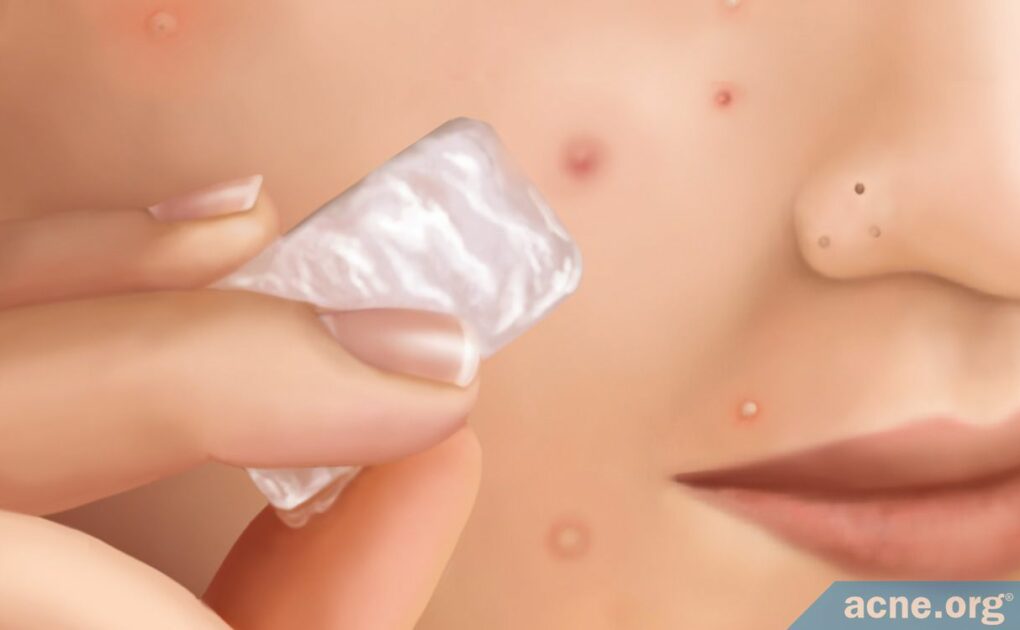Yes, It Should. Cold Is Powerfully Anti-Inflammatory.

The Essential Info
Applying ice to an emerging pimple can often work wonders in preventing its development. In fact, applying ice is more powerful than anything you could apply topically, and a lot less expensive to boot.
Ice not only helps prevent the swelling and inflammation inherent in acne, it may help in managing any pain as well.
Spot Treatment: For a safe and convenient method of preventing an acne lesion, put a single ice cube into a Ziploc®-type bag and gently hold it on an emerging pimple for 5 minutes, twice a day. Ice works less well on a full-blown zit.
Treating Your Entire Face: Fill a Styrofoam cup with water and freeze it. Peel away the top ½ inch of Styrofoam and very gently move the ice around your entire face for 5 – 10 minutes. You can do this up to twice per day. However, since acne-prone skin should only be washed a maximum of twice per day, make sure you do it immediately before washing your face during your morning and/or evening acne treatment regimen.

The Science
So far there is only one study that looks directly at how reducing skin temperature might help heal acne. The study shows that reducing temperature may in fact help reduce skin oil and thus reduce acne.1
Expand to read details of study

A 2015 study in the Journal of Investigative Dermatology applied extreme cold to the skin of both mice and humans to determine whether cryotherapy can help treat acne or not. The treatment cooled an area of skin to −10 degrees Celsius (14 degrees Fahrenheit) for 20 minutes or −15 degrees Celsius (5 degrees Fahrenheit) for two cycles of 10 minutes. This study found that the cold treatment reduced the production of sebum (skin oil), which in turn reduced acne lesions. The authors noted, “In humans, cooling to −10 or −15 °C for 20 minutes resulted in an approximate 20% suppression of sebum output that persisted for over 2 weeks.”1
Even though we only have this one study, in the real world, doctors frequently use cold in the form of a procedure called cryosurgery to treat acne. Cryosurgery uses extreme cold (liquid nitrogen or dry ice) to freeze an acne lesion for just a few seconds. This destroys the damaged cells within the lesion that cause redness and inflammation and promotes rapid healing of the lesion.

Cryosurgery is not most doctors’ first choice when it comes to treating acne, but it can be a helpful alternative for patients who are limited in what acne medications they can use, for example, during pregnancy.2
It would be dangerous to use liquid nitrogen or dry ice at home in this manner, but this successful use of cold by dermatologists tells us that cold in the form of ice may also help heal acne.
Scientists have also performed several studies on the use of cold with soft-tissue injuries of the muscles, ligaments, and tendons. We can use this research to give us clues into how cold might help with acne as well. Results from these studies are mixed, but overall, cold appears to perform some beneficial functions like reducing inflammation and tissue damage, which tells us that ice could potentially also help with acne.3-5
Expand to read details of studies

According to a 2006 study in The American Journal of Sports Medicine, treating muscle injury in rats with a cooling solution reduced swelling, inflammation, and tissue damage.3 The solution in this study was a saline (salt water) solution at 8 degrees Celsius (46 degrees Fahrenheit) that was applied continuously for 6 hours to the skin over an injured muscle.

Several studies included in a 2007 literature review in the Journal of Periodontology indicated that applying ice after an injury slowed down cell metabolism and reduced blood flow, swelling, and pain and ultimately resulted in faster recovery.4

A 2008 review in Emergency Medicine Journal, which evaluated several studies that were performed on both humans and animals, found conflicting results:
- Of two clinical trials, “one [showed] supportive evidence for the use of a cooling gel and the other [did not reach] statistical significance.”
- Four animal studies demonstrated that “modest cooling reduced [swelling] but excessive or prolonged cooling is damaging.”
- Of two systematic reviews, “one…was inconclusive and the other suggested that ice may hasten return to participation [in activities].”
- Of all the studies reviewed, the authors noted, “Only one clinical trial, involving 74 patients, showed a definite benefit of cold therapy in reducing pain and disability. The animal studies do show reduced [swelling], but it is not yet known if that corresponds to faster clinical recovery.”5
Ice for Acne

As we have seen so far, hard science and decades of successful use in dermatologists’ offices tells us that cold is likely beneficial for acne.
Cold causes several physiological changes that result in reduced:
- Swelling
- Inflammation
- Tissue damage
- Metabolic speed (cells slow down their usual processes)
- Blood flow
- Pain
All of these physiological changes can be helpful in managing acne.6
How-To:
Spot treatment: Place a single ice cube into a Ziploc®-type bag and gently hold it over the area to be treated for 5 minutes, twice a day. You may be surprised at how well this works, especially when you catch a pimple in its early stages.
Treating the entire face: This is a way you can help manage acne in an all-over fashion on a daily basis. Fill a Styrofoam cup with water and freeze it. Peel away the top ½ inch of Styrofoam and very gently move the ice around your entire face for 5 – 10 minutes. Remember to stay gentle because physical irritation can aggravate acne. Just very gently move the ice around without “smashing” it into your skin. You may do this up to twice per day, but even once a day may produce noticeable results. Note: When it comes to acne, it is important to avoid over-washing your skin. You should never wash more than twice per day. Since treating your entire face with ice like this gets your skin wet and is tantamount to washing your skin, treat the entire face with ice immediately before performing your morning and/or evening acne treatment regimen.
References
- Ray Jalian, H. et al. Selective Cryolysis of Sebaceous Glands. J. Invest. Dermatol. 135, 2173 – 2180 (2015). https://www.ncbi.nlm.nih.gov/pubmed/25860384
- Rho, N. K. Revisiting the role of local cryotherapy for acne treatment: A review and update. J. Clin. Med. 12, 26-44 (2022). https://pubmed.ncbi.nlm.nih.gov/36614827/
- Schaser, K. D. et al. Prolonged superficial local cryotherapy attenuates microcirculatory impairment, regional inflammation, and muscle necrosis after closed soft tissue injury in rats. Am. J. Sports Med. 35, 93 – 102 (2007). https://www.ncbi.nlm.nih.gov/pubmed/17197574
- Greenstein, G. Therapeutic efficacy of cold therapy after intraoral surgical procedures: a literature review. J. Periodontol. 78, 790 – 800 (2007). https://www.ncbi.nlm.nih.gov/pubmed/17470011
- Collins, N. C. Is ice right? Does cryotherapy improve outcome for acute soft tissue injury? Emerg. Med. J. 25, 65 – 68 (2008). https://www.ncbi.nlm.nih.gov/pubmed/18212134
- Thai, K. E. & Sinclair, R. D. Cryosurgery of benign skin lesions. Australas. J. Dermatol. 40, 175 – 184; quiz 185-186 (1999). https://www.ncbi.nlm.nih.gov/pubmed/10570551
 Acne.org Products
Acne.org Products